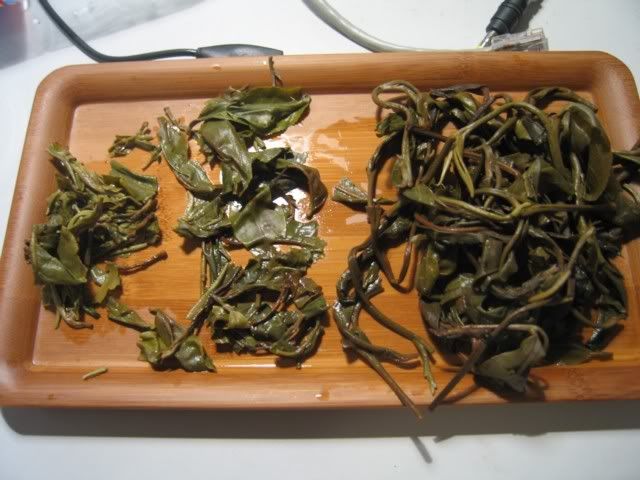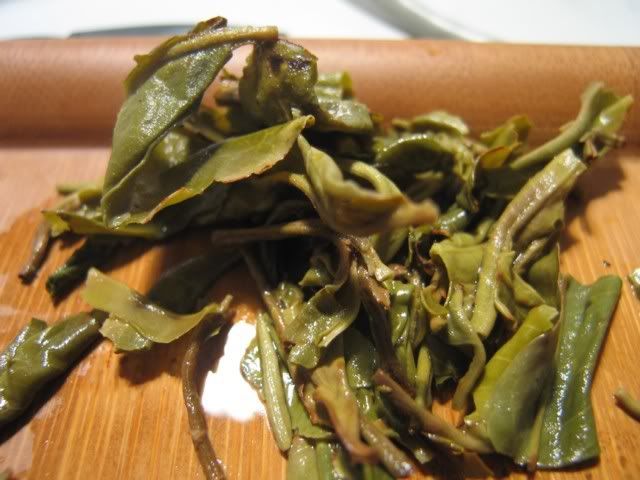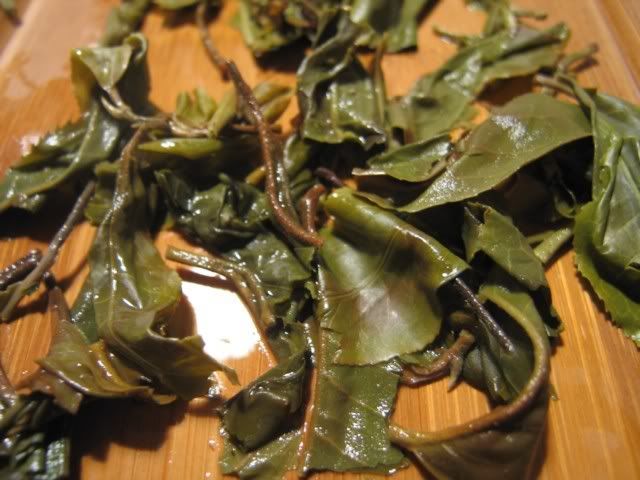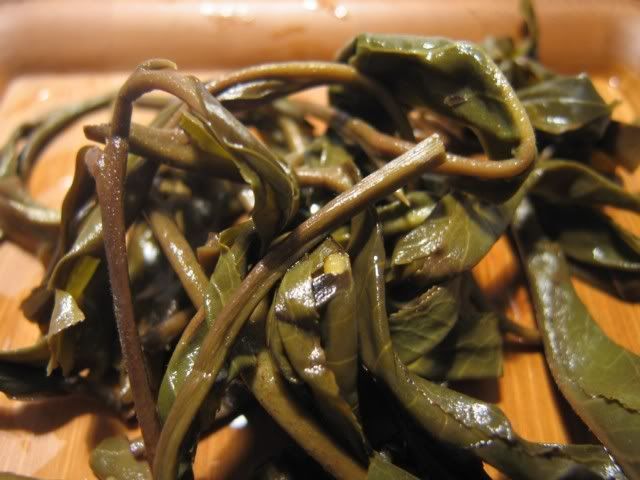I went back to the Best Tea House today for my usual visit. I dropped off some of Rosa’s tea, although most of it is still with me. I also tried a bunch of teas, none of which I’ve had before. They got some new goods, and so I was eager to give them all a shot. Talking about them, however, would be boring. Instead, something else popped into my head today.
Prices at the Best Tea House, for young, raw puerh anyway, is all over the place. For example, I tried a very expensive new cake today from the Jingmai area that was entirely unremarkable and boring, not to mention weak and unappealing. Tiffany tried it once before, and thought she just didn’t brew it right because she was rushsed. After today’s tasting, however, she realized that it wasn’t so much that her brewing was bad, but that the tea was bad. The price, however, is mystifying. It’s much more expensive than some of the older stuff which are also better. No idea why, really…
Then you have some cakes that are really quite cheap (relatively speaking, anyway). The one I bought last time was one of them. Of course, then I discovered that I could get it off taobao for a slightly lower price, but given the hassle of using that service and the shipping cost, the price was basically the same… and this is from a store with a much higher overhead!
In some ways, this is sort of a microcosm of the young puerh market in general. Prices are all over the place for all sorts of reasons, most of which aren’t even logical. Much of this, I think, derives from a lack of information on all fronts. There is a lack of information on the side of the purchasers, of course. Services like taobao and access to markets like Maliandao (provided you’ve done a lot of walking on the street) will give the consumer a good idea of what might or might not be a fair price, but both activities take a substantial amount of time to do. Most consumers don’t have that kind of time. When you can only rely on your local teashops and when you only shop for tea once every, say, two weeks, it’s hard to know what’s a fair price for what kind of goods.
There is also a lack of information for the retailers as well. Many times the retailer is simply selling stuff that they got from whatever source they have, and mark it up the usual % and resell it. Quality is not always involved in the calculation of the prices. Much of this is also arbitrary and unpredictable, depending on many factors such as storage, fame of the cake, production numbers, etc, all of which affect the price of a particular tea. At the Best Tea House, for example, I have seen 15-20 years old cakes, wet stored, going for half the price of a 10 years old cake, dry stored. This is quite normal. I have also seen entirely new cakes be almost 10x different in prices, despite a similar quality. I cannot understand the pricing. I think how much the tea cost the retailer in the first place plays a heavy role.
On the other hand, there are the genuine attempts to deceive consumers. At a place like Best Tea House, you can be assured of a fair quote, no matter who you are. That is not true on the mainland, where everybody gets a different quote. For example, I have asked L to get quotes for me from the Haiwan Factory store for some of their cakes. He got them for me. I then went back with him a week later, asking the same question for the same prices. I think I got a different salesperson that day, and not surprisingly, the quote was different by about 15%. It was actually lower, but it could’ve been higher as well. We just laughed it off as a funny incident (especially since he’s actually a tea vendor, when I’m not), but without transparent prices, such things happen all the time. I’ve personally experienced them many times on Maliandao, and I’m definitely not alone.
While prices are lower at a place like Maliandao, getting the low prices involves substantial work and a reasonable amount of knowledge and experience in dealing with these people. I have seen a dramatic decrease in the prices I pay for puerh in Beijing over the coures of the year. Although you might think it is nice to get the low prices, in some ways, those buying tea from the US or Europe or elsewhere, especially those purchasing tea over the internet, have a much better and easier time. Even though prices are obviously higher through ebay vendors than what I could get at Maliandao, prices are also transparent and more importantly, stable. While prices do rise, they do so in a slow and predictable fashion. Whereas Dayi tea in China over 2006 has seen times when it was literally “one day, one price”, internet prices through ebay were the same for the same 7542, 601 batch. That itself is a bit of a blessing. In fact, some of the ebay items are selling at basically no premium over what the current market prices for the same tea in China. Since ebay consumers probably won’t tolerate a 40% price hike in the course of a few months, the prices can only stay the same, or more or less the same.
Raw material prices for old, big arbour trees in Yunnan have been shooting up by something like 50% a year. This year, from what I have heard second hand anyway, raw leaves prices are the highest in Lao Banzhang, reaching 550-600RMB for one kg of maocha. Yiwu is second, clocking in around 280-300 or so. Jingmai is a bit lower, and then you have the rest. This is only what I have heard. Work in some attrition of maocha during production, add in sundry costs like pressing and transportation and overhead and stuff, and you can roughly work out how much a cake of these old wild arbour trees should cost to make and to be sold at a profit by the people who first made them.
How much they retail for, however, is an entirely different subject. As I have noted, pricing is all over the place, but I think it would be quite unreasonable to charge anything more than 300% of raw cost of the tea for retail, more if it’s being sold overseas (as it’s been through somebody else’s hands). The more hands its been through, the more it would cost. Other factors come in, such as the kind of market the store serves (i.e. stores that are located in CBDs with pretty salesgirls and fantastic decor will sell the same tea for more, obviously). Factory reputation come in (the Dayi premium, for example). The stories, unfortunately, also come in (this is tea made by so and so when he discovered a new field of tea trees in xxx area, unharvested for a long time!).
More on prices tomorrow. This is getting too long.





 RSS - Posts
RSS - Posts
Interesting.... would 250C in my oven work?